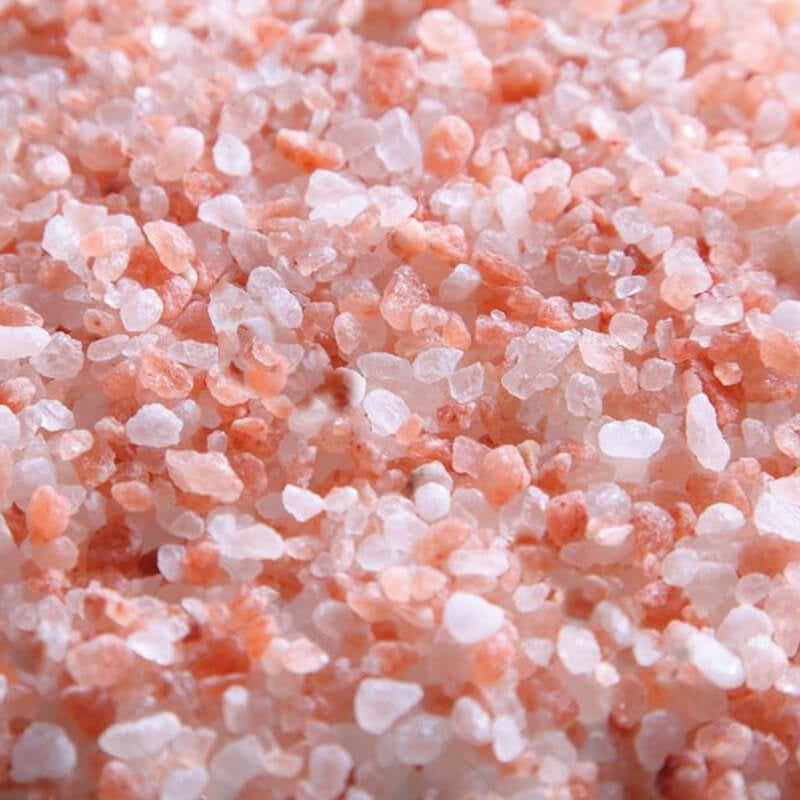Salt
As well as boosting the flavor and the aroma of bread, salt plays an important role in tightening the gluten structure which is what adds strength to your dough. It helps the loaf to hold on to the carbon dioxide gas that is formed during fermentation, supporting good volume. Salt, being hygroscopic, is able to win the battle for water which means the yeast’s activity and subsequently fermentation and enzyme activity is slowed down which also helps boost flavour.
As far as bread goes, most types of salt work as long as the salt crystals are fine enough to dissolve and be distributed easily. You can use some of the recipe’s water allocation to dissolve the more coarse type grains.
Some salts can contain additives, some have other minerals next to the sodium chloride (NaCl) considered beneficial for you (like Celtic sea salt which is also lower in sodium).
As far as ethical or health benefits go, the choice is yours, taste wise, and functionality wise it will not make a big difference to your loaf.

Table Salt
The most common type of salt and readily available for most people. It’s highly refined and finely ground, with some impurities and trace minerals removed in the process. Table salt is usually treated with an anti-caking agent to keep it from clumping.
Most table salt is iodized, meaning iodine has been added to prevent iodine deficiency.
Sea Salts
Harvested from evaporated sea water, sea salt is usually unrefined and coarser-grained than table salt. It also contains some of the minerals from where it was harvested – zinc, potassium and iron among them – which give sea salt a more complex flavor profile.
“Sea salt” is a pretty broad term, as it includes some of the specialty salts described below. Sprinkle it on top of foods for a different mouth feel and bigger burst of flavor than table salt.
Celtic Sea Salt
Also known as sel gris or gros sel (French for “grey salt”, or “big salt”), Celtic sea salt is harvested from the bottom of tidal ponds off the coast of France. The salt crystals are raked out after sinking; this, plus the mineral-rich seawater its extracted from, gives Celtic salt its moist, chunky grains, grey hue and briny taste.
It’s great on fish and meat as both a cooking and finishing salt, as well as for baking.
Flake Sea Salt
Harvested from salt water through evaporation, boiling or other means, flake salt is thin and irregularly shaped with a bright, salty taste and very low mineral content.
This shapes means the crunchy flake salt dissolves quickly, resulting in a “pop” of flavor. Of the different types of salt, use it as a finishing salt, especially on meats.
Black Hawaiian
Also known as black lava salt, black Hawaiian salt is a sea salt harvested from – you guessed it – the volcanic islands of Hawaii. It gets its deep, black color from the addition of activated charcoal.
Coarse-grained and crunchy, black Hawaiian salt is great for finishing pork and seafood.
(Source: https://www.wideopeneats.com/12-different-types-salt-use/)
Himalayan Pink Salt
Of the different types of salt, Himalayan salt is the purest form of salt in the world and is harvested by hand from Khewra Salt Mine in the Himalayan Mountains of Pakistan. Its color ranges from off-white to deep pink. Rich in minerals – it contains the 84 natural minerals and elements found in the human body – Himalayan salt is used in spa treatments, as well as the kitchen.
Its mineral content gives it a bolder flavor than many other salts, so use it as a cooking and finishing salt – or to add a bit of flair to a salt-rimmed margarita! Slabs of the stuff are used for cooking and serving (Himalayan salt retains temperature for hours), and unfinished pieces often appear in shops as lamps.
Kosher Salt
Koshering salt – or kosher salt, in the U.S. – is flakier and coarser-grained than regular table salt. Despite it’s large grain size it dissolves quickly, making it a perfect all-round cooking salt.
Most kosher salt does not contain any added iodine, and only rarely any anti-caking agents. Despite the name, all kosher salt is not certified kosher, it’s actually used in the koshering process.
Fleur De Sel
Flowers of salt. Harvested from the fine film formed through evaporation on the surface of seat water. The crystals are smaller than other sea salts, and softer, more humid.
The mix of minerals in the crystals can include high levels of calcium and magnesium, making the taste a little softer than other salts. Relatively expensive, Fleur de sea, is usually used in presentation rather than as a bulk salt.
Kala Namak
Kala namak (“black salt” in Nepalese) is Himalayan salt that’s been packed in a jar with charcoal, herbs, seeds and bark, then fired in a furnace for a full 24 hours before it’s cooled, stored and aged.
This process gives kala namak its reddish-black color, its pungent, salty taste and a faint, sulfurous aroma of eggs. It’s often used in vegan and vegetarian dishes to give egg-free dishes the taste of egg, as well as in Ayurvedic practice.











